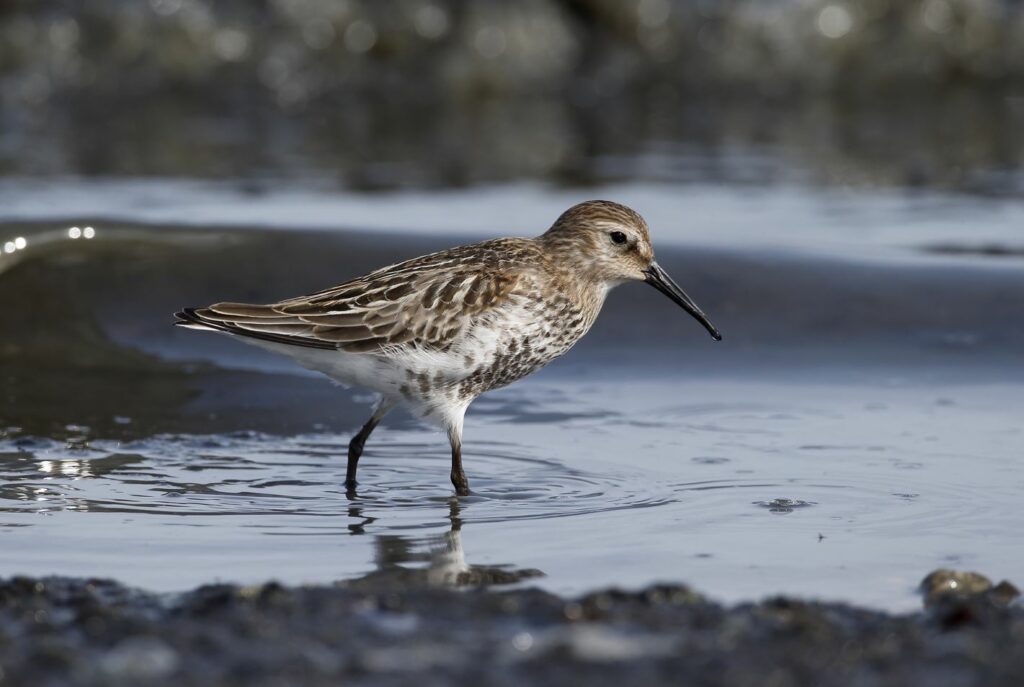Birdlife thrives this winter
We’ve spotted some wonderful birds on the project sites this winter, including Dunlins, Gadwall, Turnstones and Wigeon. We’re counting birds two hours either side of high tide in areas where we are working along the Severn Estuary and River Avon. This lets us know how many birds and what species are present. It also gives us the perfect opportunity to observe which birds are over-wintering with us.
As well as vital new flood defences, the project is creating a minimum of 80 hectares (the equivalent of 112 football pitches) of new wetland habitat for all manner of wildlife to thrive, while the planting of hundreds of native trees will improve the environment for years to come.
Last month, ornithologists gathered data on the birds that are visiting areas throughout the Severn Estuary. At New Passage, the survey recorded over 10,000 Dunlins, a small wader bird that winters in estuaries throughout the UK, and which has never been recorded here in such numbers before. At Holes Mouth outfall in Avonmouth, where we constructed the new rock armour flood defence last summer, we spotted 30 Gadwall. This is an unusually high number for this species.
Cllr Nicola Beech, Bristol City Council Cabinet Member with responsibility for Strategic Planning, Resilience & Floods, said: “The species recorded here on the Severn Estuary are a clear reminder of the important work we are doing to preserve and enhance our natural environment. This is incredibly welcome news. We’re very much looking forward to so many of these internationally important species making their homes on our new wetlands in years to come.”

